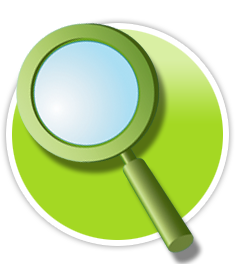CONSIDERACIONES PARA EL ANÁLISIS DE LA MARCHA HUMANA. TÉCNICAS DE VIDEOGRAMETRÍA, ELECTROMIOGRAFÍA Y DINAMOMETRÍA - Considerations for human gait analysis
CONSIDERACIONES PARA EL ANÁLISIS DE LA MARCHA HUMANA. TÉCNICAS DE VIDEOGRAMETRÍA, ELECTROMIOGRAFÍA Y DINAMOMETRÍA - Considerations for human gait analysis
Barra lateral del artículo
Cómo citar
Villa Moreno, A., Gutiérrez Gutiérrez, E., & Pérez Moreno, J. C. (2011). CONSIDERACIONES PARA EL ANÁLISIS DE LA MARCHA HUMANA. TÉCNICAS DE VIDEOGRAMETRÍA, ELECTROMIOGRAFÍA Y DINAMOMETRÍA - Considerations for human gait analysis. Revista Ingeniería Biomédica, 2(3), 16–26. https://doi.org/10.24050/19099762.n3.2008.39
Palabras clave:
Número
Sección
Artículo original
Licencia
![]()
Esta obra está bajo una Licencia Creative Commons Atribución-NoComercial-NoDerivativa 4.0 Internacional
Contenido principal del artículo
Adriana Villa Moreno
Programa de Ingeniería Biomédica. Escuela de Ingeniería de Antioquia – Universidad CES, Colombia, Laboratorio de Análisis de Movimiento, Centro de Rehabilitación Infantil Teletón, México
Eduardo Gutiérrez Gutiérrez
Laboratorio de Análisis de Movimiento, Centro de Rehabilitación Infantil Teletón, México
Juan Carlos Pérez Moreno
Laboratorio de Análisis de Movimiento, Centro de Rehabilitación Infantil Teletón, México
Resumen
El análisis de la marcha humana resulta ser de gran utilidad para una amplia gama de aplicaciones, como el diagnóstico y elección de tratamientos en pacientes con enfermedades neuro-músculo-esqueléticas. Los métodos y tecnologías existentes para este análisis son numerosos, y permiten la obtención de los parámetros cuantitativos característicos de un patrón de marcha de manera objetiva. Durante el análisis de marcha muchos factores deben ser considerados para realizar los estudios adecuadamente, algunos de ellos se deben tener en cuenta desde la etapa de configuración y planeación del laboratorio, otros para el proceso de adquisición de los parámetros, y otros para el análisis de los resultados. En este trabajo se presentan algunas de estas consideraciones que parten tanto de la revisión bibliográfica como de la experiencia directa con pacientes, enfocadas principalmente en sistemas que combinan técnicas de videogrametría, dinamometría y electromiografía, por ser estos los de mayor utilización en la actualidad.
Abstract—Human gait analysis has been used in a wide range of applications, such as diagnosis and treatment selection for patients with neuro-muscular-skeletal diseases. The methods and technologies that exist for gait analysis are numerous, and they allow the recollection of the main quantitative parameters of a gait pattern in an objective way. A lot of factors must be considered during gait analysis in order to obtain reliable results; some of them must be taken into account, including the planning and configuration of the laboratory, the acquisition process and the results analysis system. This paper presents some considerations derived from the literature review and also from the direct experience with patients. They are mainly focused in systems which use techniques such as videogrammetry, dynamometry and electromyography, since they are the most used nowadays.
Abstract—Human gait analysis has been used in a wide range of applications, such as diagnosis and treatment selection for patients with neuro-muscular-skeletal diseases. The methods and technologies that exist for gait analysis are numerous, and they allow the recollection of the main quantitative parameters of a gait pattern in an objective way. A lot of factors must be considered during gait analysis in order to obtain reliable results; some of them must be taken into account, including the planning and configuration of the laboratory, the acquisition process and the results analysis system. This paper presents some considerations derived from the literature review and also from the direct experience with patients. They are mainly focused in systems which use techniques such as videogrammetry, dynamometry and electromyography, since they are the most used nowadays.
Descargas
Los datos de descargas todavía no están disponibles.


 http://hdl.handle.net/11190/440
http://hdl.handle.net/11190/440
 FLIP
FLIP







